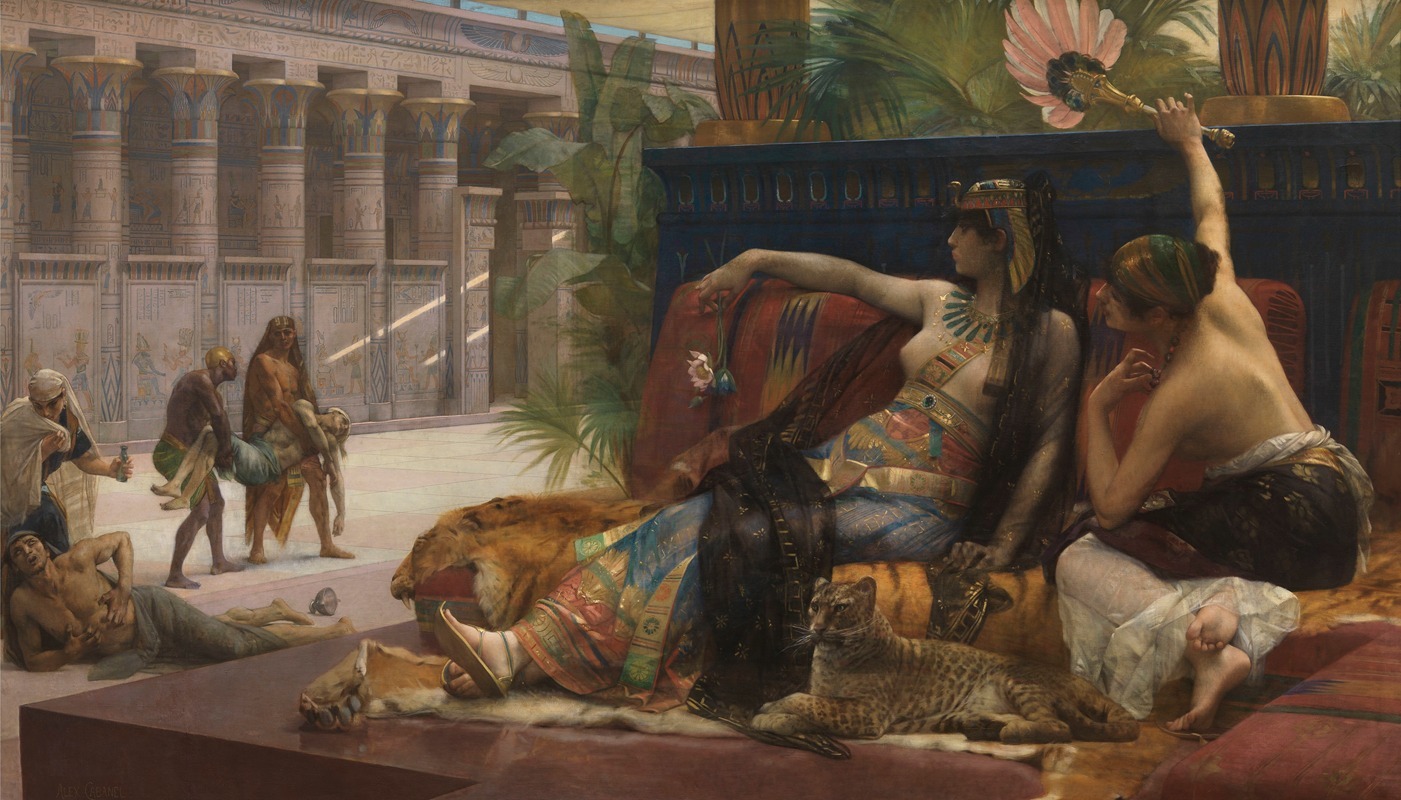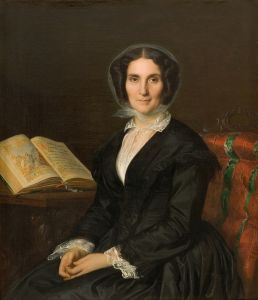
Cleopatra
A hand-painted replica of Alexandre Cabanel’s masterpiece Cleopatra, meticulously crafted by professional artists to capture the true essence of the original. Each piece is created with museum-quality canvas and rare mineral pigments, carefully painted by experienced artists with delicate brushstrokes and rich, layered colors to perfectly recreate the texture of the original artwork. Unlike machine-printed reproductions, this hand-painted version brings the painting to life, infused with the artist’s emotions and skill in every stroke. Whether for personal collection or home decoration, it instantly elevates the artistic atmosphere of any space.
"Cleopatra" is a painting by the French artist Alexandre Cabanel, created in 1887. Cabanel was a prominent academic painter of the 19th century, known for his classical and mythological subjects, as well as his highly polished technique. This particular work depicts Cleopatra VII, the last active ruler of the Ptolemaic Kingdom of Egypt, a figure who has fascinated historians and artists for centuries due to her political acumen, romantic liaisons, and tragic end.
In "Cleopatra," Cabanel portrays the queen in a moment of repose, reclining on a luxurious couch. The painting captures the opulence and sensuality often associated with Cleopatra's image. She is adorned in rich, exotic fabrics and jewelry, emphasizing her status and wealth. The background features elements that suggest an Egyptian setting, including intricate patterns and motifs that evoke the grandeur of her court.
Cabanel's Cleopatra is depicted with a serene and contemplative expression, which contrasts with the often dramatic and tumultuous representations of her life in other artworks and literature. This portrayal aligns with the 19th-century European fascination with Orientalism, where artists and writers romanticized and exoticized the cultures of the Near East and North Africa. Cabanel's attention to detail and his ability to render textures and materials with precision are evident in the intricate depiction of Cleopatra's attire and surroundings.
The painting was well-received in its time, reflecting the academic art standards of the period, which valued technical skill and adherence to classical ideals. Cabanel's work, including "Cleopatra," was celebrated for its beauty and craftsmanship, securing his reputation as one of the leading artists of his era. His ability to blend historical and mythological themes with a refined aesthetic made his paintings popular among both critics and the public.
"Cleopatra" by Alexandre Cabanel is housed in the Musée d'Orsay in Paris, France. The museum, which is renowned for its collection of 19th-century art, provides an appropriate setting for this masterpiece. The painting continues to be admired for its artistic merit and its representation of one of history's most enigmatic figures.
Cabanel's depiction of Cleopatra contributes to the long tradition of artistic interpretations of the queen, each reflecting the cultural and historical contexts of their creators. His work stands out for its elegance and the subtlety with which it captures the allure and mystery of Cleopatra, ensuring its place in the canon of significant 19th-century European art.


















